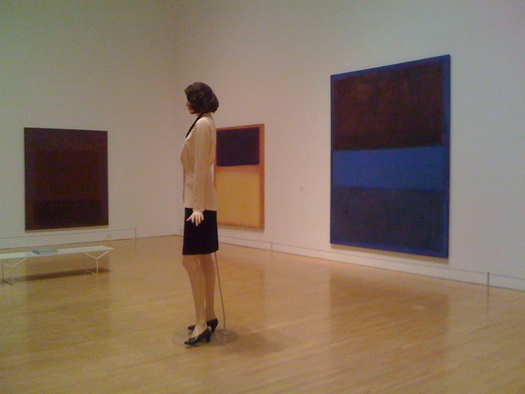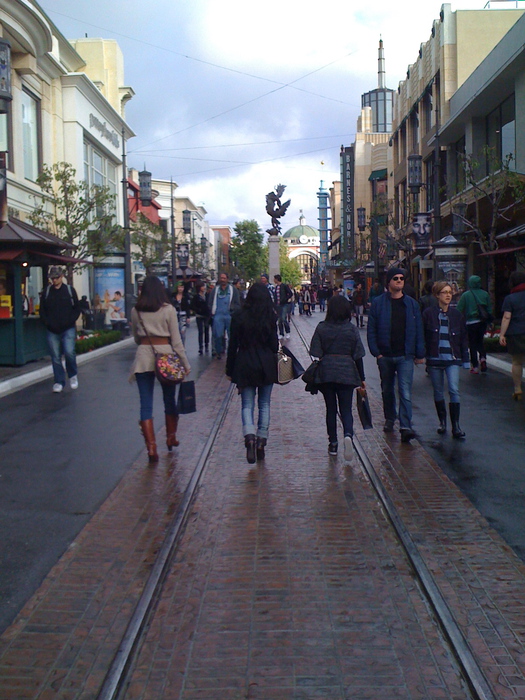
A couple of weeks ago I was in Los Angeles, and dropped in on MoCA, the Museum of Contemporary Art. It was a Saturday, and there was a free entry promotion, so I figured the place would be packed — on a pretty weekend afternoon in New York, MoMA, the Guggenheim, and the Whitney all have lines out the door — but it felt like I was the only one around. "Nobody goes downtown on the weekends here," a friend told me the next day.
I should have been happy, because what's better than an empty museum that you have to yourself? Arata Isozaki's MoCA art cave, however, didn't strike me as a particularly amenable place to look at painting. The lighting is dim (in sunny L.A., of all places) and the cramped gallery layout doesn't leave room enough for the collection to breathe. The Rothko room is a big disappointment: sticking an oversize Charles Ray sculpture in there seems like a juvenile sight gag.
I don't keep close tabs on the art world michegas of Los Angeles, but I did notice the prominent donor's panel in front of the museum's entry. Eli Broad sits at the top with a gift in excess of $30 million. There's an anonymous benefactor at $5 million, a few smaller donors, and then about a hundred donors who've given $1,500. That kind of shocked me: that you could get your name placed so prominently on the donor wall for a measly fifteen hundred bucks, and then that the museum could get so few to actually fork over such a minimal gift. I suppose if someone else gives $30 million, you figure it's his toy and why bother?
MoCA's Geffen Contemporary outpost is a lot more successful, architecturally and curatorially. The trippy Suprasensorial exhibition of contemporary op art now on view is definitely worth a visit.
The next day, I hit the Grove, an outdoor mall dressed up like the commercial center of a European city. It was, in marked contrast to downtown, packed. Angelenos seem to want the kind of pedestrian-friendly urbanism, with diverse retail and entertainment options, they can't find in the arts district around MoCA. As that area is developed (with a new Broad museum by DS+R, a massive new development by Frank Gehry across from his spectacular LA Philharmonic), it would be good to learn a little something from the Vegas-y mall across town.

